#Church of Sant'Agnese in Agone
Text
Piazza Navona, built on what was the Stadium of Domitian (year 85) with the fantastic works of Borromini, Fontana dei Quattro Fiumi in the center and the church of Sant'Agnese in Agone, in Rome.
(Video ©️Manutoni24)
259 notes
·
View notes
Photo
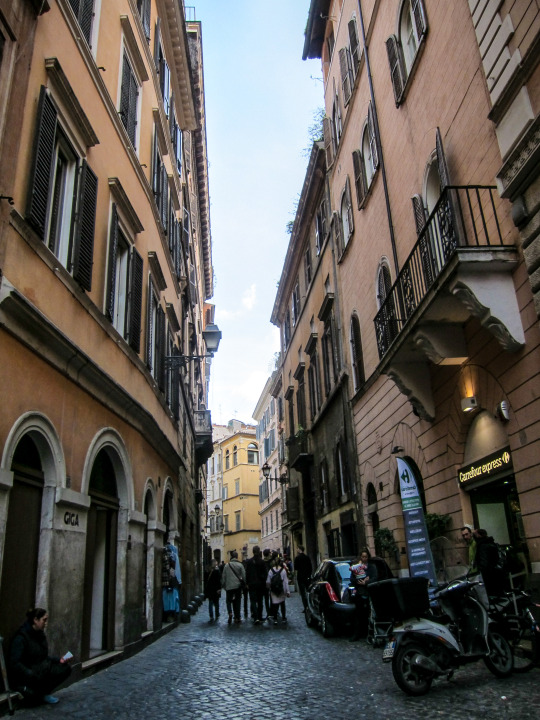
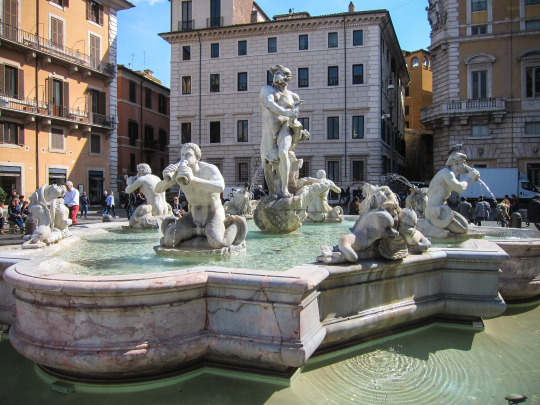

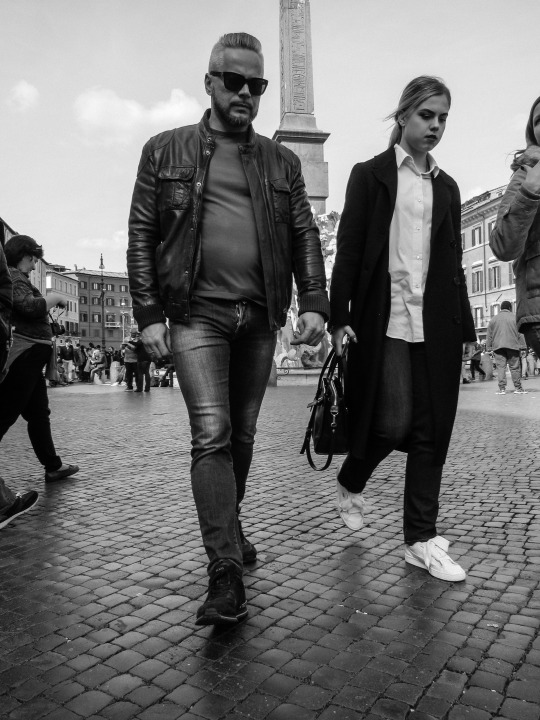
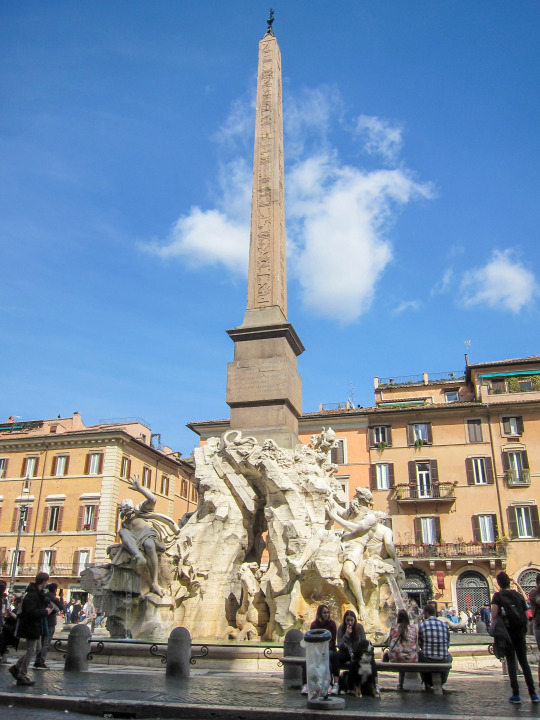
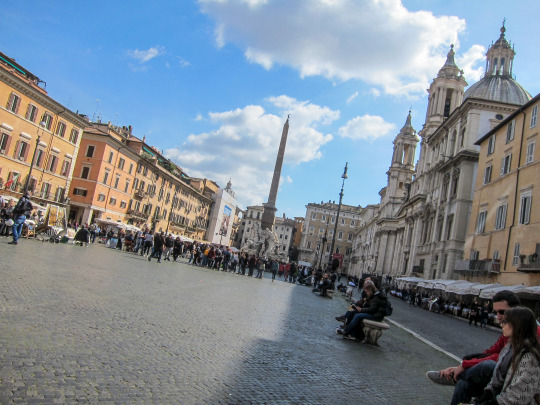
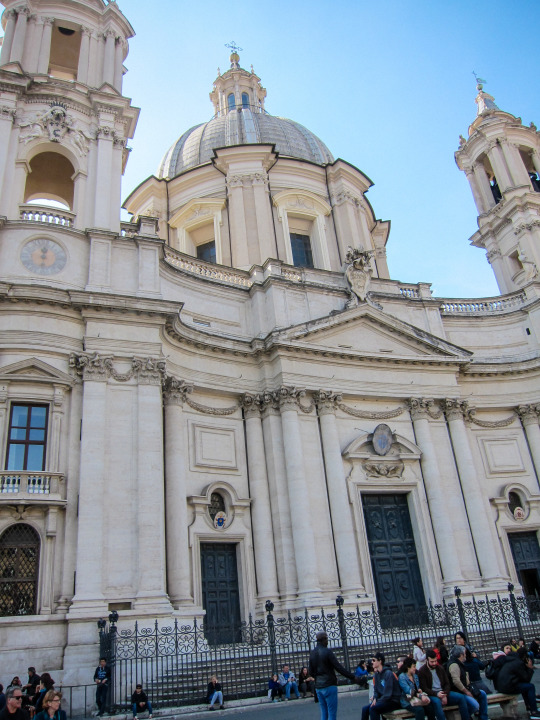
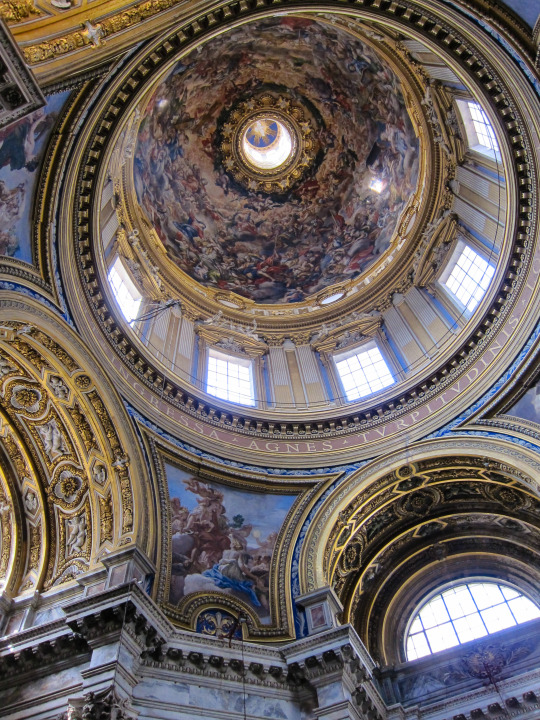
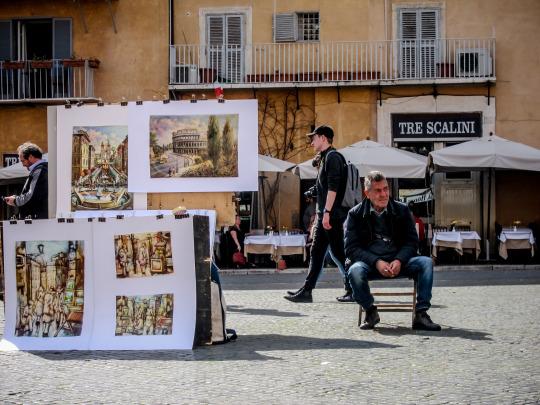
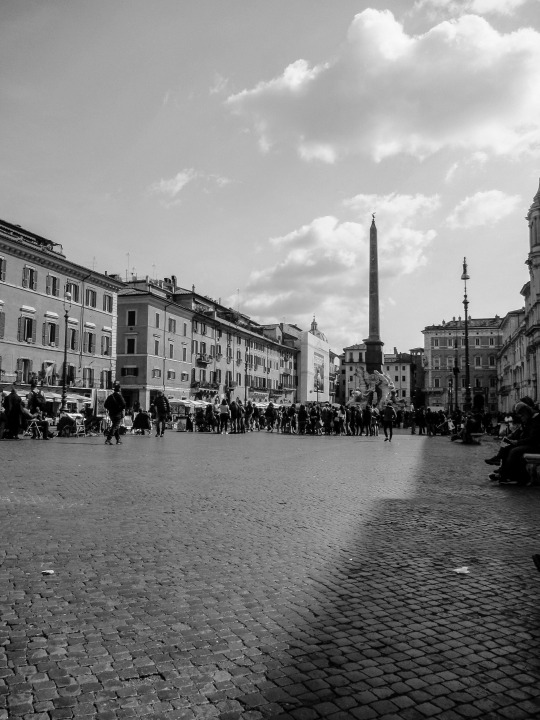
PIAZZA NAVONA, ROME, ITALY (March 28, 2018)
I had discovered the area by accident during my last trip to Rome in 2010 and thought it might be a swell idea to recommend a visit to my travel companions in 2018.
The Piazza Navona offers a leisurely walk throughout the square with tons to see from end to end. My favorites will always be the fountains: Bernini’s Fountain of the Four Rivers with its towering obelisk, and the Fountain of the Moor and the Fountain of Neptune by della Porta, a student of Michelangelo. But of course there’s also the 17th century Baroque church, Sant'Agnese in Agone.
If you have time, order some espresso or tartufo at the nearby cafes. Leilah, Barok, Palan and I decided on some Grom ice cream at the corner kiosk that day.
15 notes
·
View notes
Text
Rome, day 2, part 2
After recovering from our sun-baked morning, we headed to Rome's historic center. We started at the Pantheon.

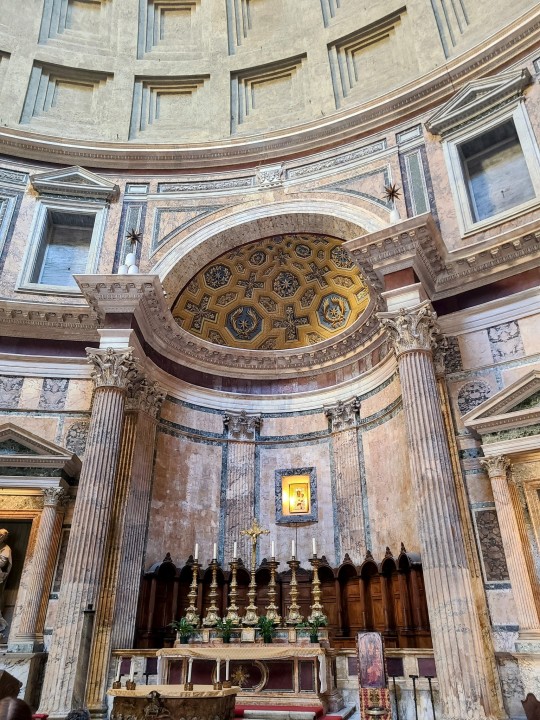
Theoretically there is a "modest" dress code at all of these churches, where your knees and shoulders are supposed to be covered. This dress code did not appear to be being enforced at any of the churches we went to today, judging by what some people were wearing.
Something I found particularly neat at the Pantheon was these symmetrical marble inlays, which I assume were created by cutting a slab in half and then opening it up like a book. They remind me of inkblots.
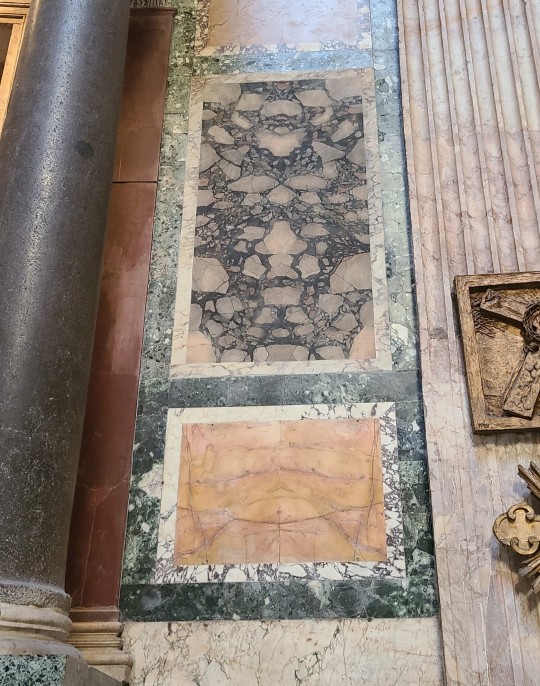
After the Pantheon, we stopped into the San Luigi dei Francesi, an elaborately decorated church dedicated to a French king. The church has a bunch of Caravaggio paintings, but the church seemed to have turned off the lights in all the niches that housed them, so we couldn't exactly appreciate most of them.

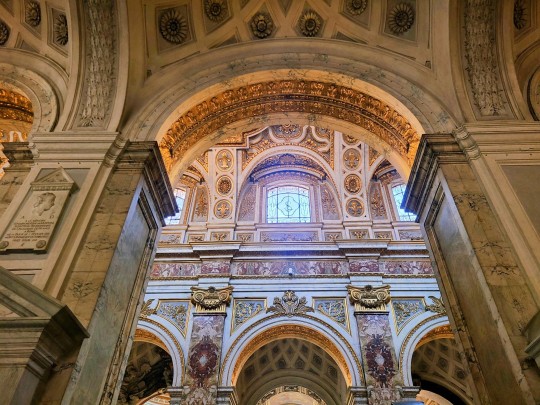
Then we went to the Piazza Navona, a busy plaza with some fountains, including this one featuring a guy beating the shit out of an octopus.
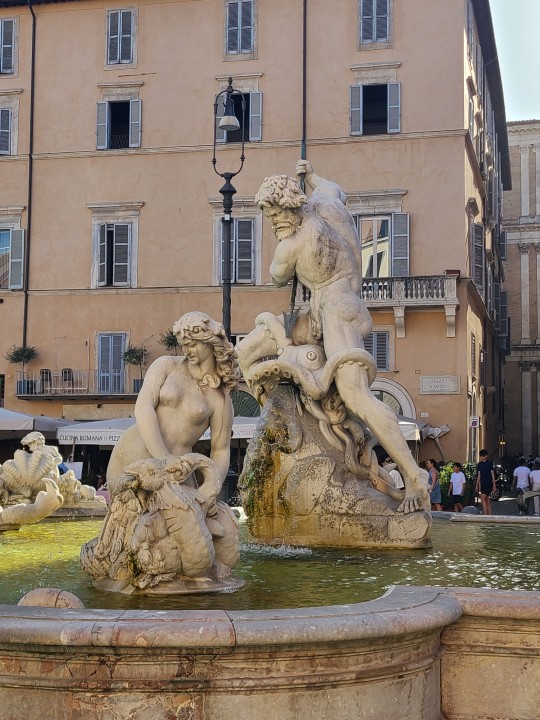
The church of Sant'Agnese in Agone was on the plaza, so we stopped in there too, for more striking baroque interiors.
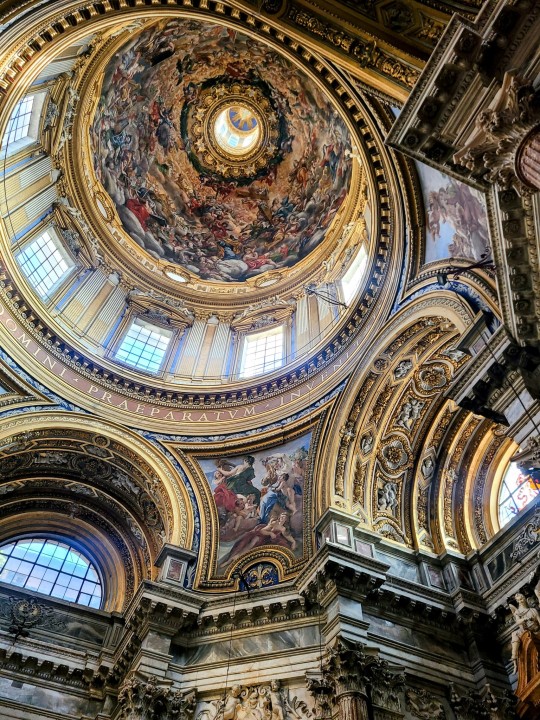

I particularly liked this inlaid bird on the floor.
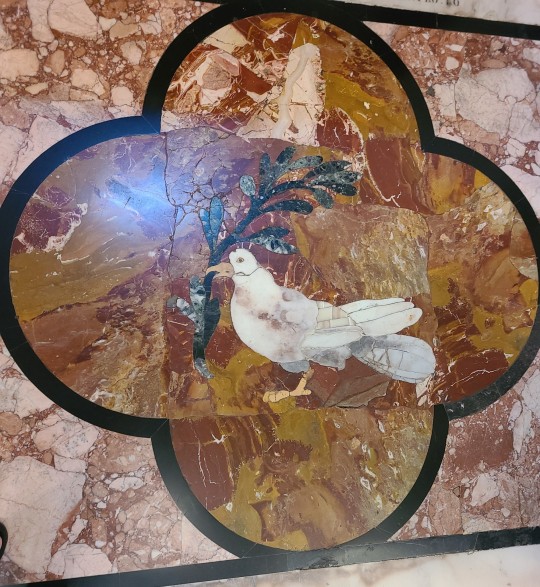
After that we had dinner at a restaurant built on the ruins of an ancient theater, and we walked the mile back to the hotel as the sun set and it was finally not horrifically hot out. (Only in the high 80s. Practically arctic.)

1 note
·
View note
Photo
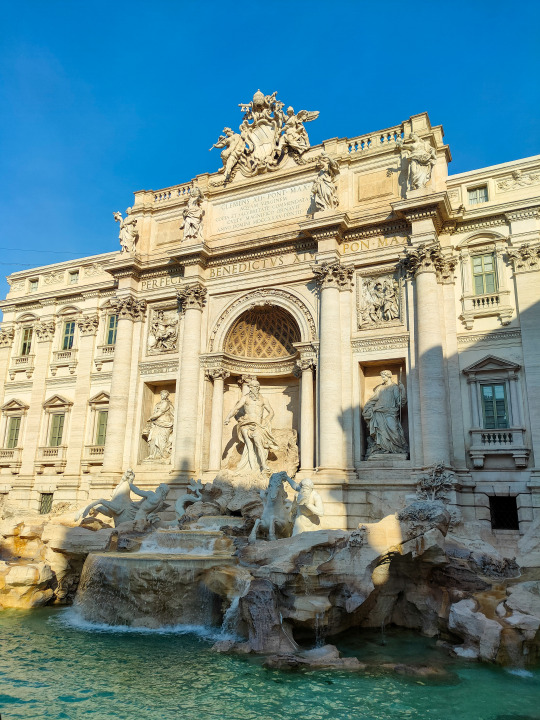
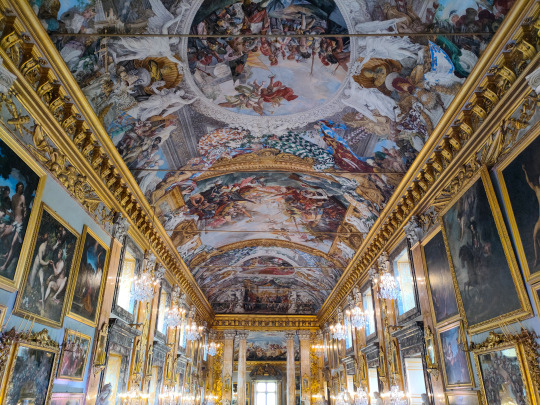
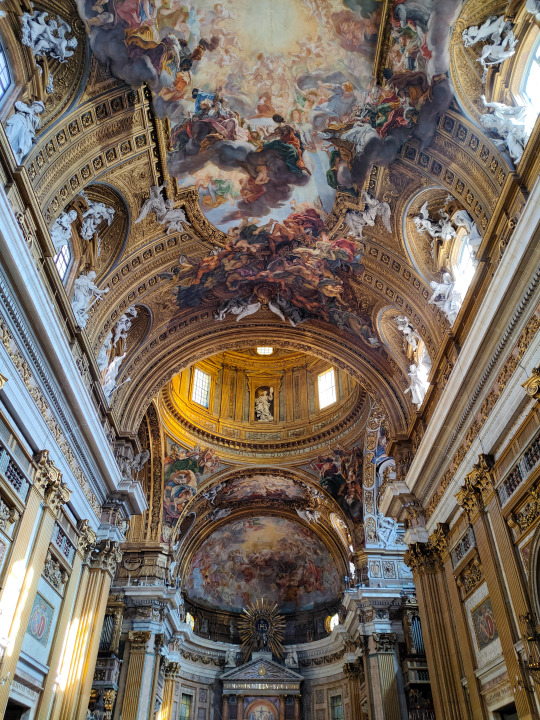
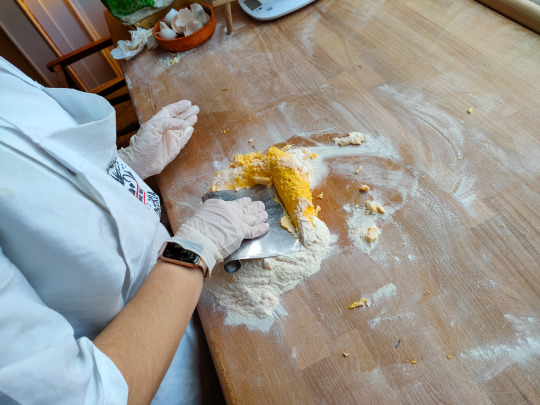
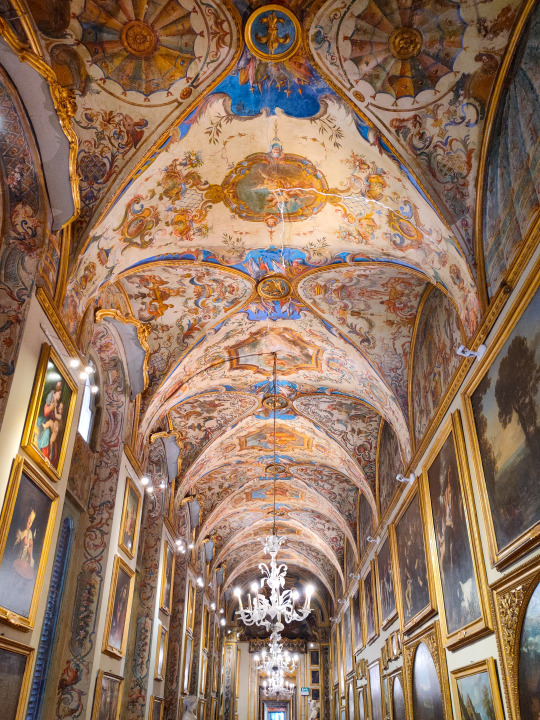
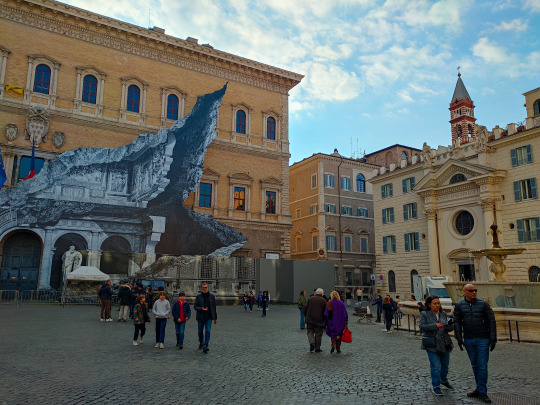
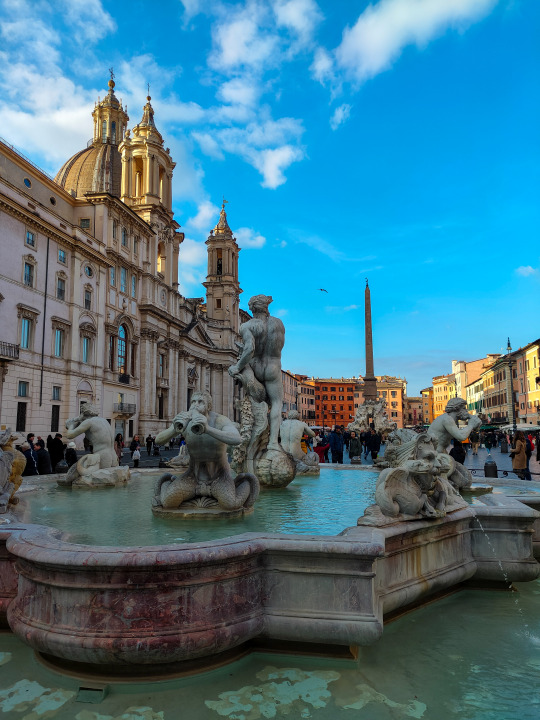
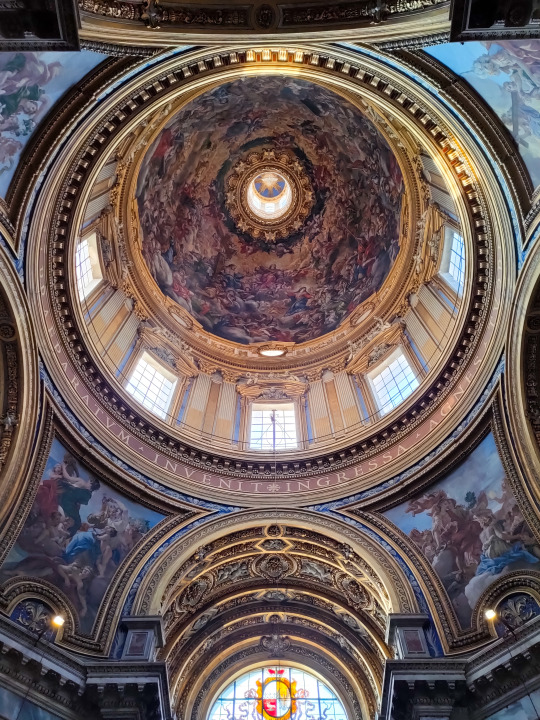
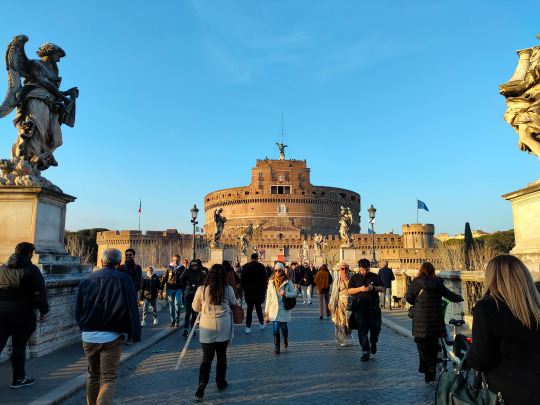

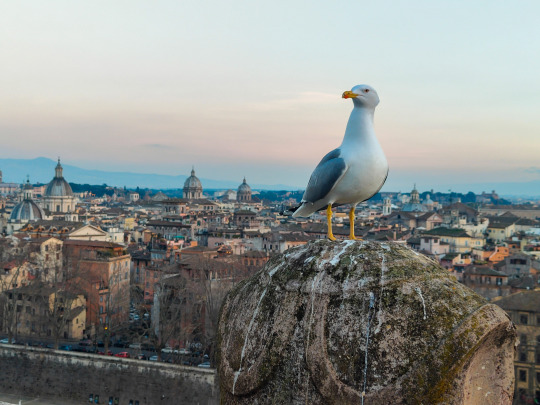
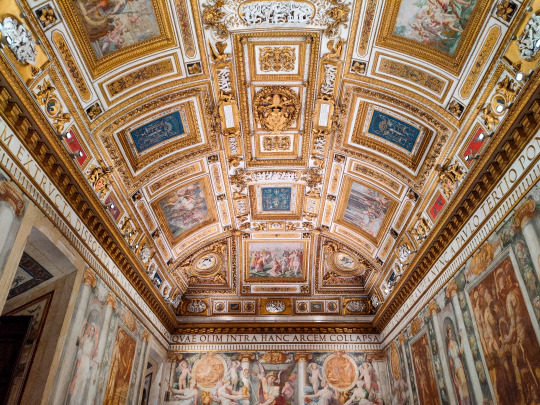
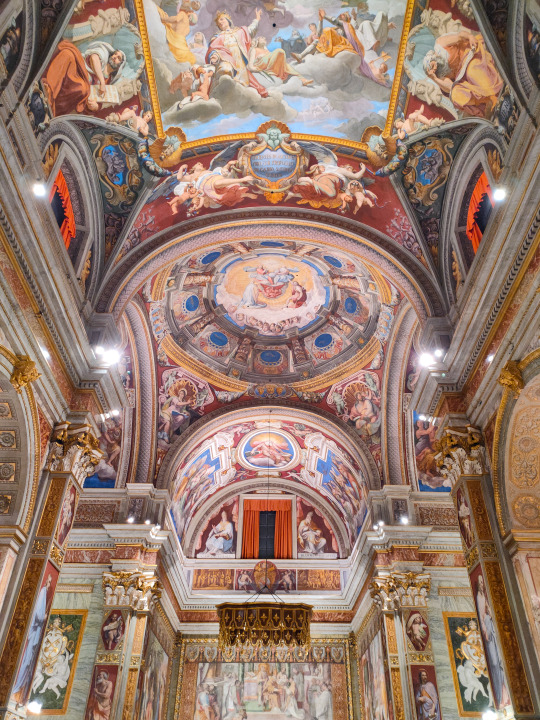
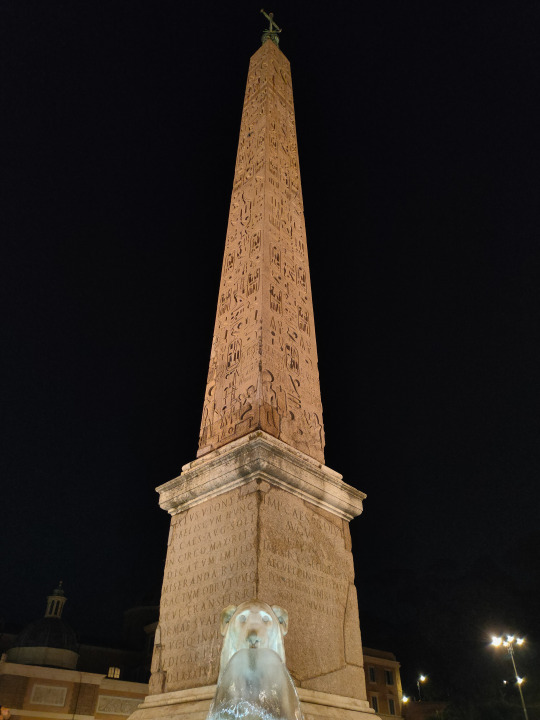
17.-21.02.2023 Roma
18.02
Fontana di Trevi
Galleria Colonna
Chiesa del Gesù
Largo di Torre Argentina
Galleria Dora Pamphilj
Piazza Farnese, Campo de’ Fiori
Piazza Navona
Santuario di Nostra Signora del Sacro Cuore
Sant'Agnese in Agone
Castel Sant’Angelo
Chiesa Sacro Cuore del Suffragio
Chiesa di San Girolamo dei Croati
Church of Saint Roch 'all'Augusteo'
Flaminio Obelisk, Piazza del Popolo
Scalinata di Trinità dei Monti, Piazza di Spagna
0 notes
Text
Fontana dei Quattro Fiumi


Fontana dei Quattro Fiumi (Fountain of the Four Rivers) Rome by Gian Lorenzo Bernini (in background Sant'Agnese in Agone Church by Francesco Borromini) There is a story that Gian Lorenzo Bernini the guy who designed the fountain didn't like the guy who designed the church Francesco Borromini so made sculptures on the fountain to look in horror at the church interesting story if true
https://en.wikipedia.org/wiki/Fontana_dei_Quattro_Fiumi
https://en.wikipedia.org/wiki/Sant%27Agnese_in_Agone
0 notes
Photo

sant'agnese in agone church in rome, italy ⋅ ph. francesco perilli
#sant'agnese in agone#church#rome#italy#europe#beauty#window#gold#golden#marble#stone#architecture#art#ornate#detail#details#photo#photography#paint#painting#fresco
57 notes
·
View notes
Photo
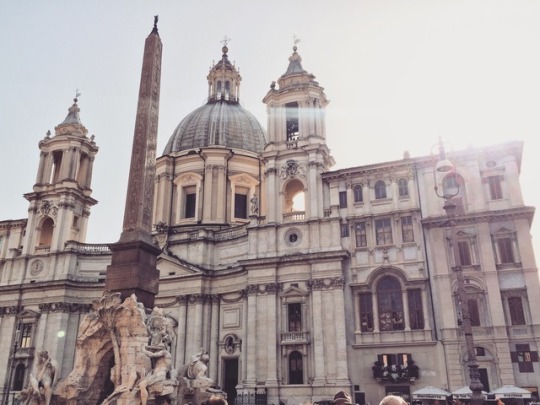
Piazza Navona is a square that was built on what used to be Domitian's stadium (Circus Domitianus), which is why the piazza is shaped the way it is.
Piazza Navona, Rome, Italy
#piazza navona#rome#italy#europe#architecture#history#art history#european#italian#roma#italia#Fountain of the Four Rivers#fontana dei quattro fiumi#Church of Sant'Agnese in Agone#sant'agnese#study abroad#travel#travel life#travel photography#travel blog#travel blogger#study abroad blog#wanderlust#explore#adventure#picture of the day#photo of the day#photographers on tumblr#photographers of tumblr#circus domitianus
417 notes
·
View notes
Photo

Dreamy Places by Giulio Pugliese
Piazza Navona | (Where is this?)
#eternaroma#Rome#Roma#Itally#Italia#Europe#travel#exterior#piazza#Piazza Navona#fountain#fontana#day#Giulio Pugliese#Sant'Agnese in Agone#Sant'Agnese in Piazza Navona#church#Fontana dei Quattro Fiumi#Fountain of the Four Rivers
53 notes
·
View notes
Photo

Sant'Agnese in Agone (ceiling interior), Rome, Italy. A 17th century Baroque church designed by Girolamo Rainaldi and his son, Carlo Rainaldi. The near-circular interior, actually a Greek cross design, is circumferentially surrounded by marble sculptural Baroque masterpieces. [3240 x 2160] [OC] via /r/ArchitecturePorn https://www.reddit.com/r/ArchitecturePorn/comments/in7fpi/santagnese_in_agone_ceiling_interior_rome_italy_a/?utm_source=ifttt
2 notes
·
View notes
Text
765PRO Idols and its Saints
I have so much time to end this month because tomorrow in my home country, it’s September. Which means that some Christmas songs will play in malls. Oh, and I manage to pull it out through so here are the girls from 765PRO!

1/21 - Takane Shijou
St. Agnes: Virgin and martyr and is one of seven women who, along with the Blessed Virgin, are commemorated by name in the Canon of the Mass. She is depicted in art with a lamb, evoking her name which resembles the Latin word for 'lamb', agnus, an is shown holding a palm, symbolzing her martyrdom. Although that she is the patron saint of girls and chastity, she had two major shrines in Rome - the Sant'Agnese fuori le mura (Saint Agnes Outside the Walls) and Sant'Agnese in Agone. It is customary on her feast day for two lambs to be brought from the Trappist abbey of Tre Fontane in Rome to the Sant'Agnese in Agone church to be blessed by the Pope. And on Holy Thursday, they are shorn, and from the wool is woven the pallium which the pope gives to a newly consecrated metropolitan archbishop as a sign of his jurisdiction and his union with the pope.
2/25 - Chihaya Kisaragi
St. Donatus of Zadar: Also known as 'Donato of Zara', he is a Dalmatian saint who became a bishop and a diplomat for the Dalmatian city-state of Zadar (Zara). He is mentioned in Frankish annals from 805 as an ambassador of the Dalmatian cities to Charlemagne in Thionville and is credited for initiating either construction or expansion of the Church of the Holy Trinity.
3/25 - Yayoi Takatsuki
St. Dismas the Repentant Thief: In the Holy Bible's New Testament, he is one of two unnamed thieves in the Gospel of Luke. He describes him asking Jesus to 'remember him' when Jesus will have 'come into' his kingdom (Lk 23:39-43). Officially venerated by the Catholic Church, he is the patron saint of prisoners (especially the condemned) and San Dimas, Mexico.
4/3 - Haruka Amami
St. Luigi Scrosoppi: Italian priest from the Oratorians and is known as the founder of the Sisters of Providence of Saint Cajetan of Thiene. Luigi gave himself tirelessly to fundraising, and was soon running an organisation which accommodated 100 boarders and 230 day pupils in a building which became known as the House of the Destitute. Canonized as a saint by Pope St. John Paul II in 2001, he was appointed the patron saint of footballers by Bishop Alois Schwarz at a church service in the Austrian parish of Pörtschach on August 22, 2010.
5/5 - Iori Minase
St. Aventinus of Tours: Honored by the Church, he was a hermit and a close friend of Thomas Becket, the Archbishop of Canterbury. Living the life as a hermit in Tours before being ordained a deacon and subsequently accompanied him to the Synod of Tours in 1163. He settled in Touraine after the archbishop’s martyrdom in 1170, where he remained and spend his final years until his death.
5/22 - The Futami Twins (Ami and Mami)
St. Rita of Cascia: Italian widow and nun from the Augustinian order and is famously known for her monicker, 'The Saint of the Impossible'. Various miracles are attributed to her intercession, and she is often portrayed with a bleeding wound on her forehead, which is understood to indicate a partial stigmata. In May 1900, Pope Leo XIII canonized her as a saint and she was bestowed the title of Patroness of Impossible Causes, while in many Catholic countries, Rita came to be known as the patroness of abused wives and heartbroken women. Her incorrupt body remains in the Basilica of Santa Rita da Cascia.
6/23 - Ritsuko Akizuki
St. Joseph Cafasso: Italian priest who was a significant social reformer and was one of the so-called 'Social Saints' who emerged during that particular era. Joseph is known as the 'Priest of the Gallows' due to his extensive work with those prisoners who were condemned to death. His major shrine can be found at Santuario della Consolata in Turin, and is canonized as a saint by Pope Pius XII in June 1947.
7/19 - Azusa Miura
St. Arsenius of Corfu: Also known as 'Arsenius of Kerkyra', he is one of the principal patron saints of Corfu alongside Spyridon, Born in Constantinople to the Jewish faith, he became a Christian and is Corfu's first bishop.
8/29 - Makoto Kikuchi
The Passion of St. John the Baptist: Known as ’The Beheading of the Forerunner’ and ’Decollation of Saint John the Baptist’, is a event in the Bible and it’s a holy day that is observed by Christian churches. According to the Gospel of Mark (6:14-27), it commemorates the martyrdom by beheading John on the orders of Herod Antipas through the vengeful request of his step-daughter Salome and her mother Herodias on the king’s birthday.
10/10 - Hibiki Ganaha
St. Cerbonius: Populonian bishop who lived in the time of the Barbarian invasion. Gregory the Great praises him in Book XI of his Dialogues. Another tradition states that Cerbonius was a native of North Africa who was the son of Christian parents. Ordained a priest by Regulus, though not the same one as in the Scottish Legend. One of the saint's attributes was a bear licking his feet, because during Totila's invasion of Tuscany, he was ordered to be killed by a wild bear, the bear remained petrified before him. It stood on two legs and opened its jaws wide. Then, it fell back on its paws and licked the feet of the saint.
11/23 - Miki Hoshii
Pope St. Clement I: 4th successor of St. Peter and is along with Ignatius of Antioch and Polycarp of Smyrna, he is one of the Apostolic Fathers. Clement was imprisoned under Emperor Trajan according to tradition and is executed by being tied to an anchor and thrown in the sea. He is recognized as a saint in many Christian churches and is considered a patron saint of mariners and stone-cutters.
12/24 - Yukiho Hagiwara
Christmas Eve: The day before Christmas. It is widely observed as a full or partial holiday in anticipation of Christmas Day. Together, both days are considered one of the most culturally significant celebrations in Christendom and Western society. The idea of Jesus being born at night is reflected in the fact that Christmas Eve is referred to as Heilige Nacht (Holy Night) in German, Nochebuena (the Good Night) in Spanish and similarly in other expressions of Christmas spirituality, such as the song ’Silent Night, Holy Night’.
#random stuff#catholic#catholic saints#im@s#THE IDOLM@STER#765PRO ALLSTARS#haruka amami#chihaya kisaragi#yukiho hagiwara#yayoi takatsuki#ritsuko akizuki#azusa miura#iori minase#makoto kikuchi#ami futami#mami futami#miki hoshii#hibiki ganaha#takane shijou
16 notes
·
View notes
Text
Tagged by: @revengeisalwaysanoption
Icon: Well, my real icon is a picture I took last December in Rome; it's a snap of Piazza Navona showing a very high contrast-blue enhanced and then black and white-ed detail of the Fontana dei quattro fiumi (Fountain of the Four Rivers) by Lorenzo Bernini.
There's a legend regarding Berinini and another artist, Francesco Borromini, and their mutual hatred: apparently, Bernini snatched the commission for the fountain from Borromini but then, knowing that Borromini was actually going to design the facade of the church right in front of it (Sant'Agnese in Agone), sculpted one of the four man as if he's covering himself from a possible collapsing of the church (meaning that Borromini was bad at his job) or even shielding his eyes from the hideous sight.
Of course it's probably not even true but I was fascinated and very much amused by it so I decided to put it as my icon lol
Sadly, I don't think that tumblr mobile got the memo and I'm sure you're still seeing my old icon, which is, well, me. Sorry about that
Content: It used to be mostly Skam remakes, occasionally Try Guys and BuzzFeed Unsolved, but now it's mostly Try Guys and then whatever I'm watching that day and I have opinions about it
Header: It's "Vieillard lisant" by Ferdinand Hodler (It means Old man reading). It's a visual representation of my soul (or, as the youngster would say, I just vibe with it).
URL: venivivividi, it's a play on "Veni, vidi, vici" (I came, I saw, I conquered), a phrase attributed to Gaio Giulio Cesare, and my nickname Vivi. I decided to replace the 'vici' one despite the order bc I never win.
Blog title: (I'm not cool); well, I may seem like an edgy person but honestly I'm a huge dork, so, don't tell me I didn't warn you.
I’m pretty sure everyone has already done it, but if you want to, consider yourself tagged by me! (maybe @isisisak ? )
1 note
·
View note
Photo

A view of Piazza Navona. The famous Fontana dei Quattro Fiumi or Fountain of the Four Rivers (Bernini, 1651) can be seen on the left side with its Egyptian obelisk standing tall. Across the fountain is the Sant’Agnese in Agone church, also called Sant'Agnese in Piazza Navona, which is an example of a 17th-century Baroque Roman architecture. - The square is built on the site of the Stadium of Domitian, built in the 1st century AD, and follows the form of the open space of the stadium. The ancient Romans went there to watch the agones ("games"), and hence it was known as "Circus Agonalis" ("competition arena"). - (25/09/18) . . . . . . . . #italy #italia #rome #roma #instarome #ig_rome #beautifulrome #instaitaly #ig_italy #europe #eurotrip #latepost #throwback #instagood #instadaily #igers #photooftheday #photography #ongooglemaps #explore #exploreeurope #exploringeurope #beautifuldestinations #shotoniphone #piazzanavona #santagneseinagone #baroque #architecture #fountainofthefourrivers #bernini (at Piazza Navona) https://www.instagram.com/christmeister/p/BvZJFI_BEL7/?utm_source=ig_tumblr_share&igshid=1hxdd3etuod2k
#italy#italia#rome#roma#instarome#ig_rome#beautifulrome#instaitaly#ig_italy#europe#eurotrip#latepost#throwback#instagood#instadaily#igers#photooftheday#photography#ongooglemaps#explore#exploreeurope#exploringeurope#beautifuldestinations#shotoniphone#piazzanavona#santagneseinagone#baroque#architecture#fountainofthefourrivers#bernini
2 notes
·
View notes
Photo

The purported skull of Saint Agnes, as displayed in the Sant'Agnese in Agone church in Rome
13 notes
·
View notes
Photo

Piazza Navona is known to be one of the largest and most beautiful piazza squares in Rome. It has 3 with impressive fountains. We didn’t walk to the south side of the square, so we only saw Fontana dei Quattro Fiumi in the center and Fontana di Nettuno on the north side. Fontana dei Quattro Fiumi (the fountain of 4 rivers) was designed by Bernini and has a large obelisk in the centre and was made in 1651. The baroque church of Sant'Agnese in Agone can be seen behind the fountain and dates back to 300 A.D. #Bernini #Fountains #FontanaDwiQuattroFiumi #FontanaDiNettuno #SantAgnese #PiazzaNavona #Itlay #Europe #History #Amazing #Travel #Wanderlust #GypsySoul #TravelBug #Tours #Exploring #FlashBackToLastYear (at Piazza Navona) https://www.instagram.com/p/CDopDyZF2hG/?igshid=uzs8pylzj2sf
#bernini#fountains#fontanadwiquattrofiumi#fontanadinettuno#santagnese#piazzanavona#itlay#europe#history#amazing#travel#wanderlust#gypsysoul#travelbug#tours#exploring#flashbacktolastyear
0 notes
Photo

Roma, Borromini, barocco e tanta luce. . . . . . . . . . . . . . #barocco #borromini #santaagneseinagone #piazzanavona #roma #church #architectures #architect #architecturelovers #architecturephotography #city #italytravel #italia #italiainunoscatto #art #culturalheritage #heritage #italiainunscatto #artistsoninstagram #travelphotography #travelgram #photographylovers #memories #spring (presso Chiesa di Sant'Agnese in Agone) https://www.instagram.com/p/CDhfSKAIxzA/?igshid=11qo92q3jb98n
#barocco#borromini#santaagneseinagone#piazzanavona#roma#church#architectures#architect#architecturelovers#architecturephotography#city#italytravel#italia#italiainunoscatto#art#culturalheritage#heritage#italiainunscatto#artistsoninstagram#travelphotography#travelgram#photographylovers#memories#spring
0 notes
Photo










Trinity Blood’s scenery - Rome
Cordonata capitolina
Chiesa di Sant'Agnese in Agone (Church of Sant’Agnese in Agone)
Fontana del Nettuno (Fountain of Neptune)
Anfiteatro Flavio (Flavian Amphitheatre)
Piazza San Pietro (St. Peter's Square)
Credit to @kalissen for the screenshots.
29 notes
·
View notes